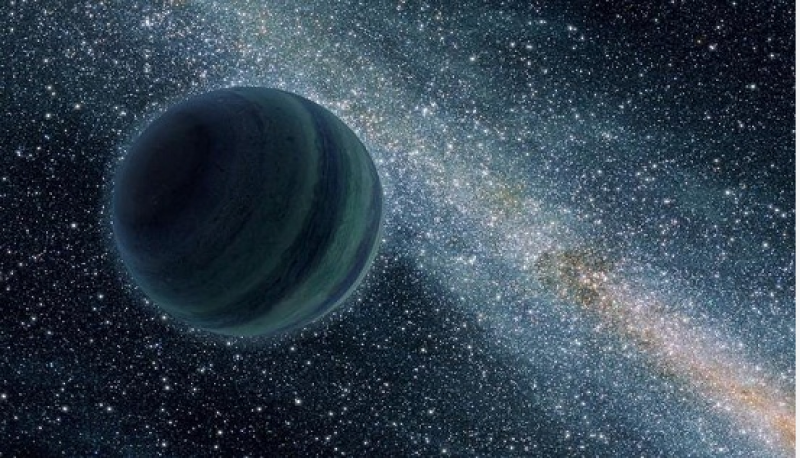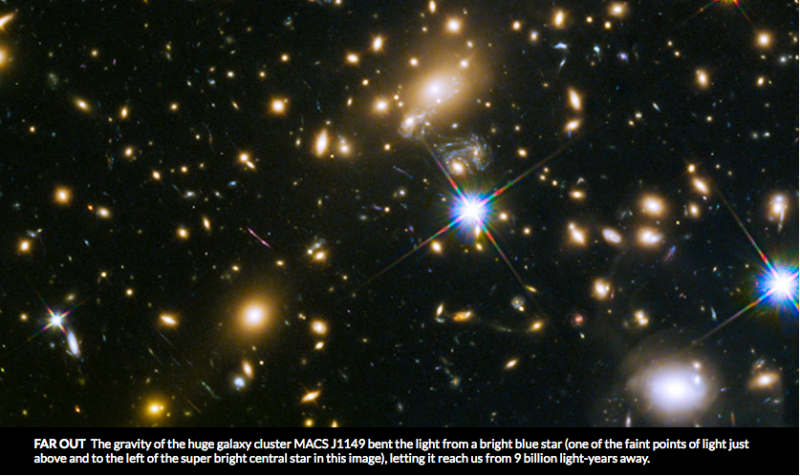News
HOW TO GET THE PERFECT ECLIPSE SHOT USING YOUR SMARTPHONE
Saturday, August 5th 2017 06:56 PM
FOR ABOUT THREE minutes on August 21, if you're lucky, you can watch the moon cross in front of the sun and block out its light in a total solar eclipse. Afterward, you can expect your Instagram feed to fill with pictures of the big event. If you want to get in on the action, make sure you get a good picture.
Sure, you could grab a DSLR with a fancy lens to get a crisp shot. But if a smartphone’s all you have, don't panic. It suffers some limitations, but with the right gear you can still get some great photos.
“Smartphones are really cool because they’re simple,” says Dr. Sten Odenwald, an astronomer and Director of Citizen Science for the Heliophysics Education Consortium at the NASA Goddard Spaceflight Center. “But trying to use them for astronomical photography is a very difficult thing to do. They’re not designed for that.” The resolution of your phone camera will limit how much of the eclipse you can see, so the end result mig...
Read More
Read More
A Close Asteroid Flyby of Earth in October Will Give Scientists Tracking Practice
Tuesday, August 1st 2017 05:29 PM
The asteroid 2012 TC4, which is thought to be between 33 feet and 100 feet (10 to 30 meters) wide, will give Earth a close shave on Oct. 12, potentially coming as close to our planet as 4,200 miles (6,800 kilometers), NASA officials said.
There's no danger of an impact by the space rock on this pass. But astronomers will be following the flyby closely, as a way of testing the international asteroid detection and tracking network. [In Images: Potentially Dangerous Asteroids Near Earth]
This animation depicts the Earth flyby of asteroid 2012 TC4 on Oct. 12, 2017. While scientists cannot yet predict exactly how close the space rock will approach, they are sure it won’t get closer than 4,200 miles (6,800 kilometers) from Earth's surface.
Credit: NASA/JPL-Caltech
"This is a team effort that involves more than a dozen observatories, universities and labs across the globe so we can collectively learn the strengths and limitations of our near-Earth object observation...
Read More
Read More
As Much as Half of the Milky Way Likely Came From Distant Galaxies
Friday, July 28th 2017 07:01 PM
We’re made of star stuff, as Carl Sagan famously put it in his TV series Cosmos. All of the elements that joined together to form our planet and everything on it were set in motion within the hearts of ancient stars. But not only are we star stuff, it appears that we’re actually made of alien star stuff.
Astrophysicists who were analyzing galaxy formation recently looked at how intergalactic gas and dust is transported over time and across great distances. They found that up to half of the matter in our Milky Way galaxy likely comes from other galaxies far, far away.
“Given how much of the matter out of which we formed may have come from other galaxies, we could consider ourselves space travelers or extragalactic immigrants,” Daniel Anglés-Alcázar, an astrophysics postdoctoral fellow from Northwestern University who led the study, said in a statement. “It is likely that much of the Milky Way’s matter wa...
Read More
Read More
The Sky This Week for July 21 to 30
Thursday, July 27th 2017 07:28 PM
Friday, July 21
Evenings this week are a great time to explore the constellation Sagittarius the Archer. This star group lies due south and at peak altitude shortly after 11 p.m. local daylight time, well after the last vestiges of twilight have faded away. The brightest stars within the constellation form the shape of a teapot — a distinctive asterism once you’ve found it. The central regions of the Milky Way pass through Sagittarius, so it’s always worth exploring this area through binoculars or a telescope.
The Moon reaches perigee, the closest point in its orbit around Earth, at 1:12 p.m. EDT. It then lies 224,462 miles (361,236 kilometers) from Earth’s center.
Saturday, July 22
Spectacular Saturn lies due south and at its peak altitude as the last vestiges of twilight fade away. It shines at magnitude 0.2 against the backdrop of southern Ophiuchus, a constellation whose brightest star glows six times fainter than the ringed planet. When viewed throu...
Read More
Read More
Here's Why Finding ‘Missing Link’ Black Holes Is So Hard
Tuesday, July 25th 2017 11:54 PM
For decades, while astronomers have detected black holes equal in mass either to a few suns or millions of suns, the missing-link black holes in between have eluded discovery. Now, a new study suggests such intermediate-mass black holes may not exist in the modern-day universe because of the rate at which black holes grow.
Scientists think stellar-mass black holes — up to a few times the sun's mass — form when giant stars die and collapse in on themselves. Over the years, astronomers have detected a number of stellar-mass black holes in the nearby universe, and in 2010, researchers detected the first such black hole outside the local cluster of nearby galaxies known as the Local Group.
As big as stellar-mass black holes might seem, they are tiny in comparison to the so-called supermassive black holes that are millions to billions of times the sun's mass, which form the hearts of most, if not all, large galaxies. The oldest supermassive black holes found to...
Read More
Read More
Optical Telescope Will Seek Sources of Gravitational Waves
Friday, July 21st 2017 12:30 AM
A new telescope in La Palma, in Spain's Canary Islands, coordinates with gravitational-wave detectors to track down optical signals of the colossal collisions that cause them.
The Gravitational-wave Optical Transient Observer (GOTO), built as an international collaboration led by the U.K.'s University of Warwick and Australia's Monash University, was officially inaugurated July 3.
The ripples in space-time called gravitational waves can be detected on Earth when they're created by extremely large-scale events in the universe — like when two ultradense neutron stars or black holes orbit each other and merge. (Massive stellar explosions called supernovas can also cause detectable gravitational waves.) The Laser Interferometer Gravitational-wave Observatory (LIGO) first detected distortion caused by those waves in 2016. ['We Don't Planet' Episode 8: Gravitational Waves]
GOTO will be able to respond to alerts from LIGO and other gravitational-wave detectors, an...
Read More
Read More
If the Sun Is 93 Million Miles Away, Why Can't We Look Directly at It?
Wednesday, July 19th 2017 09:43 PM
During next month's Great American Total Solar Eclipse, you may be tempted to take in the historic event by gazing directly at the sun, but you absolutely should not do this without the proper eye protection, experts say.
That's because, even though the sun is some 93 million miles (150 million kilometers) away, it can still cause serious, and sometimes irreversible, eye damage.
"Even very short direct observation of the sun has the potential to cause damage," said Dr. Russell Van Gelder, a clinical spokesman for the American Academy of Ophthalmology (AAO) and director of the University of Washington Medicine Eye Institute in Seattle. [The 8 Most Famous Solar Eclipses in History]
On Aug. 21, 2017, the moon will pass between the Earth and the sun, causing a total solar eclipse that will be visible from parts of the United States, along a narrow path from Oregon to South Carolina. It will be the first time since 1918 that a total solar eclipse will be visible...
Read More
Read More
Planet Nine hypothesis supported by new evidence
Tuesday, July 18th 2017 09:54 PM
Last year, the existence of an unknown planet in our Solar system was announced. However, this hypothesis was subsequently called into question as biases in the observational data were detected. Now Spanish astronomers have used a novel technique to analyse the orbits of the so-called extreme trans-Neptunian objects and, once again, they point out that there is something perturbing them: a planet located at a distance between 300 to 400 times the Earth-Sun separation.
Scientists continue to argue about the existence of a ninth planet within our Solar System. At the beginning of 2016, researchers from the California Institute of Technology (Caltech, USA) announced that they had evidence of the existence of this object, located at an average distance of 700 AU or astronomical units (700 times the Earth-Sun separation) and with a mass ten times that of Earth.
Their calculations were motivated by the peculiar distribution of the orbits found for the trans-Neptunian objects (TNO) of...
Read More
Read More
The Search for the Next Large Asteroid That Might Slam Into Earth
Saturday, July 15th 2017 07:33 PM
Throughout its 4.5-billion-year history, Earth has been repeatedly pummeled by space rocks that have caused anything from an innocuous splash in the ocean to species annihilation.
When the next big impact will be, nobody knows.
But the pressure is on to predict — and intercept — its arrival.
"Sooner or later we will get... a minor or major impact," Rolf Densing, who heads the European Space Operations Centre (ESOC) in Darmstadt, Germany, told AFP ahead of International Asteroid Day on Friday.
It may not happen in our lifetime, he said, but "the risk that Earth will get hit in a devastating event one day is very high."
For now, there is little we can do.
And yet, the first-ever mission to crash a probe into a small space rock to alter its trajectory suffered a major setback when European ministers declined in December to fund part of the project.
"We are not ready to defend ourselves" against an Earth-bound object, said Densing. "We have no active planetary defe...
Read More
Read More
The most distant star ever spotted is 9 billion light-years away
Friday, July 14th 2017 12:38 AM
The most distant star ever observed has been spotted, and its light comes from across two-thirds of the universe. That puts the star a whopping 9 billion light-years away.
Patrick Kelly at the University of California, Berkeley and his colleagues found the star in Hubble Space Telescope images of a galaxy cluster called MACS J1149. In April and May 2016, Kelly and his team saw a mysteriously fluctuating point of light in the galaxy cluster’s vicinity.
Follow-up images and analyses, posted June 30 at arXiv.org, showed that light is probably from a single bright blue star that coincidentally was behind the galaxy cluster, aligned along Hubble’s line of sight. The star is visible because the galaxy cluster’s gravity bent spacetime around the cluster, making it act like a cosmic magnifying glass. This phenomenon, called gravitational lensing, helps astronomers observe objects more distant than telescopes can see on their own.
The team calculated how much...
Read More
Read More









